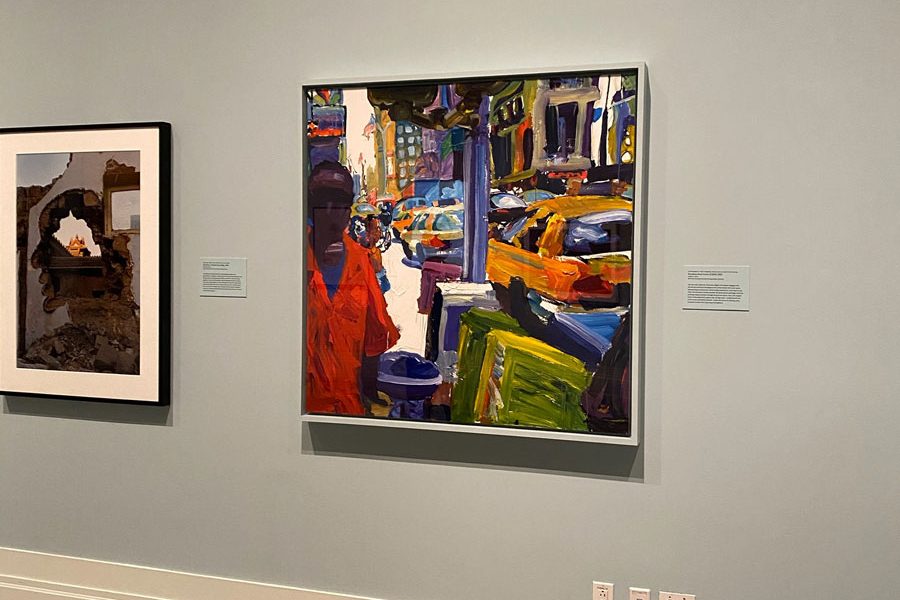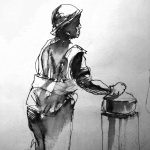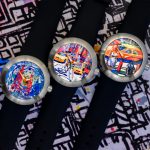October 23, 2020 – July 25, 2021
As part of the Asia Society Triennial: We Do Not Dream Alone — a multi-venue festival of art, ideas, and innovation, the New-York Historical Society and Asia Society Museum open their first-ever collaborative exhibition, Dreaming Together. More than 35 interwoven works drawn from both art collections generate dialogue about the urban and natural environments, protest and rebellion, individuals and identities, borders and crossings. The result is a powerful reflection on the possibilities unleashed when people, cultures, and institutions dream in tandem. (Curated at New-York Historical by Wendy N. E. Ikemoto, curator of American art)
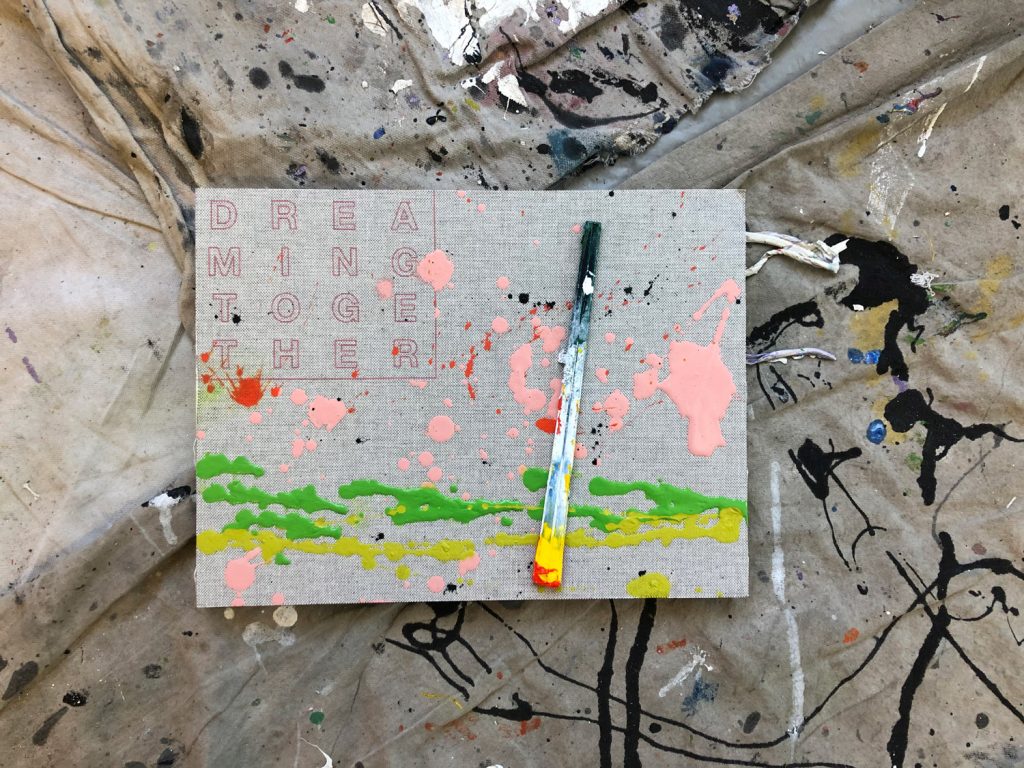
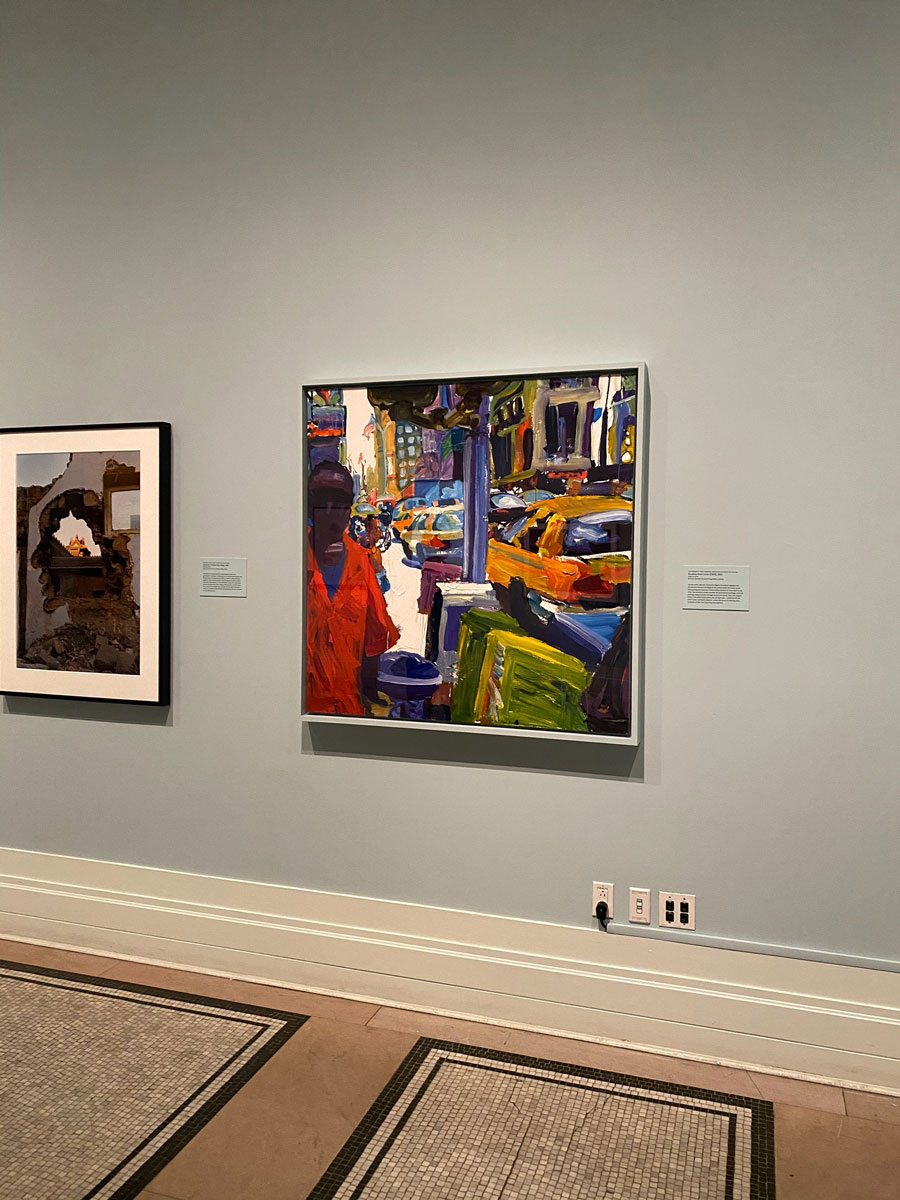
Tom Christopher: Broadway Corner Street, 24 x 36 Photo: Margi Hofer, Vice President and Museum Director NYHS
Cat 11
Tom Christopher (b 1952, Hollywood, California act. New York City.)
Broadway Street Corner (C5676), 2002
Acrylic on canvas; 46 x 46 in. (116.8 x 116.8 cm)
New-York Historical Society: Gift of Tom Christopher and David Findlay Galleries, 2003.86
Broadway Street Corner captures a fleeting encounter on New York City’s busy thoroughfare. The composition positions the viewer as a pedestrian on the sidewalk. The cropped forms of people, the yellow cab, The light post create a snapshot aesthetic of elements about to shift farther into or out of the frame. In addition, the loose and fluid brushwork imbues the scene with dynamism and movement.
Anchoring the image is the man in the reddish-orange jumpsuit on the left had edge of the canvas. He represents the Sanitation Associates in the Times Square Alliance work crew — the men and women whom contemporary American Artist Yom Christopher came to know as he stood on the street corners to sketch and photograph. As he explains, “These guys and girls really do seem to be at a different pace than everyone else rushing about. Their wavelength is different. They got to know me and I them. We would wave and ask each other if all was ok. I loved it. Observers they are.”
For the Artist the work speaks to the potential for human connection offered by the press of New York City and to “the mad rush and little islands of quiet” in its everyday life.


